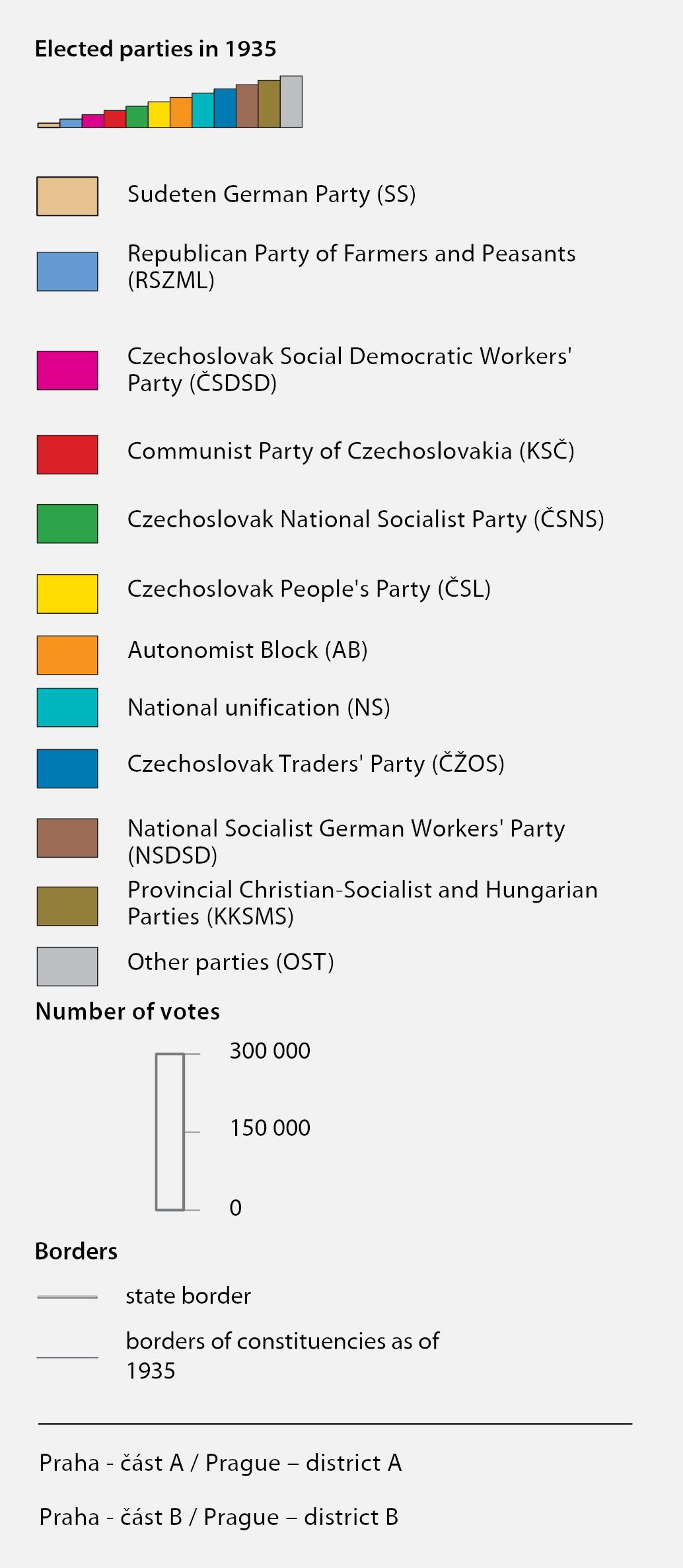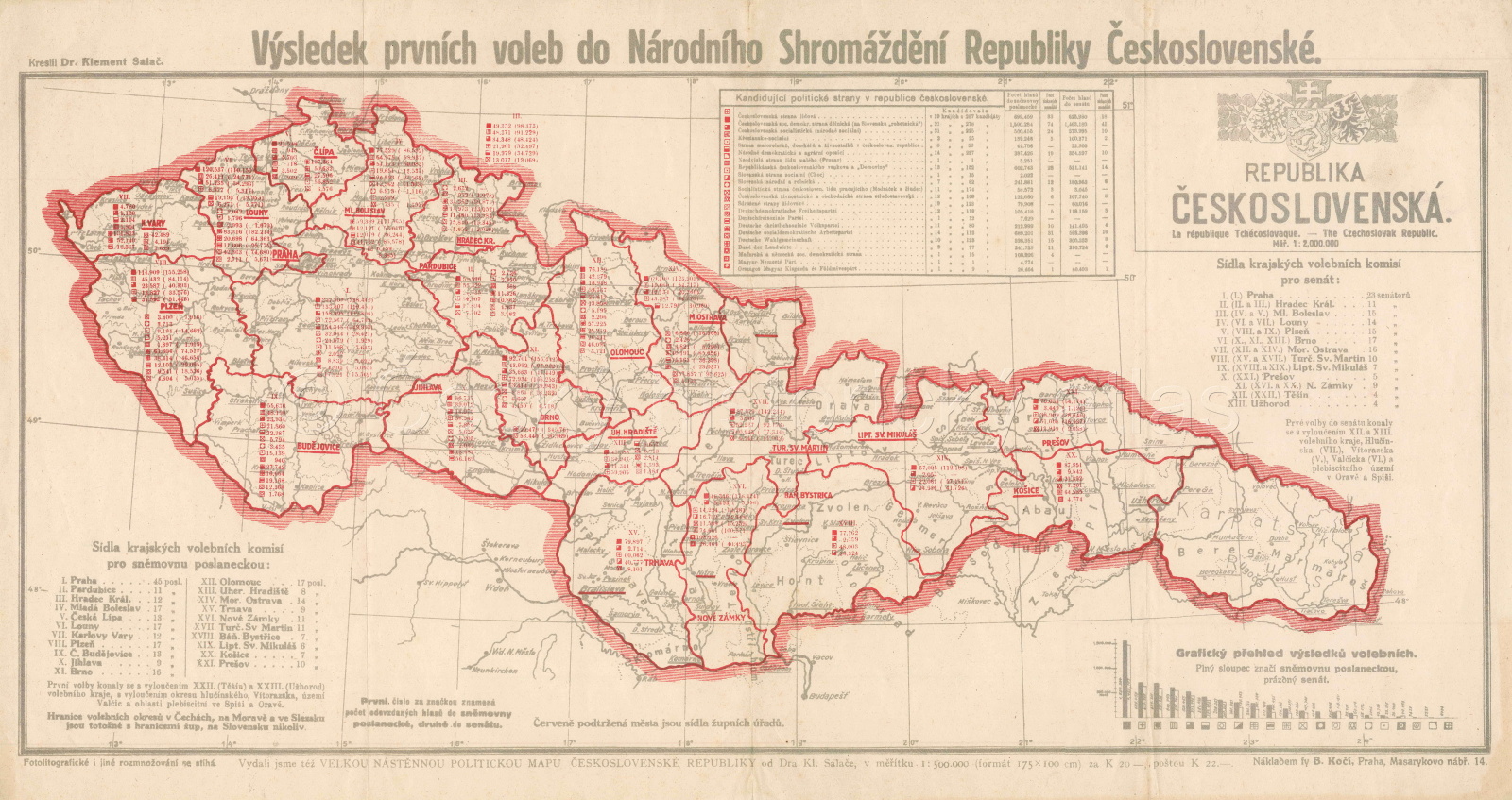Elections in the year 1920
The first parliamentary elections to the National Assembly of the Czechoslovak Republic, which was the highest representative body and primary organ of the legislative power defined by the Constitution of 29 February 1920, took place on 18 April 1920. It was one of the first parliamentary election in the world. The voting was mandatory for Czechoslovak citizens aged 21 and older, including women, while passive suffrage allowed the candidates to candidate for the Member of Parliament from the age of 30 with the minimum of three-year citizenship.

The April 1920 elections were decisively won by the Czechoslovak Social Democratic Party and the Czechoslovak Socialist Party. Karel Kramář, the first Prime Minister of the Czechoslovak government is entering the voting room at Hradčany with his wife. NA ČR Praha
References
Kovtun, J.: Republika v nebezpečném světě. Éra prezidenta Masaryka 1918–1935. Praha 2005;
Friedl J. – Jedličková B. – Škerlová J.: Parlamentní volby 1946 a Československo. Souvislosti, prognózy, fakta, následky. Praha 2017;
Semotanová, E. ‒ Zudová-Lešková, Z. – Močičková, J. – Cajthaml, J. – Seemann, P. – Bláha, J., D. a kol.: Český historický atlas. Kapitoly z dějin 20. století. Praha 2019.
Československá volební statistika. Český statistický úřad, Praha, dostupné z https://www.czso.cz/csu/czso/vysledky-voleb-do-poslanecke-snemovny-v-letech-1920-2006-n-tgdmp17urw [verified 18/02/2020].

This work is licensed under a Creative Commons BY-NC-ND 4.0
Elections in the year 1925
Since 1924, Czechoslovakia had experienced political and economic stability, but the Communist Party of Czechoslovakia significantly strengthened its membership. Nevertheless, the elections of 15 November 1925 were won by the Republican Party of Farmers and Peasants. After a lengthy negotiation, the last government of nationwide coalition was formed. It was led by Republican Antonín Švehla but lasted only for three months. Then the government was assumed by a caretaker government and then again by A. Švehla's government, the so-called Gentlemen's coalition (Panská koalice), which involved German parties for the first time.
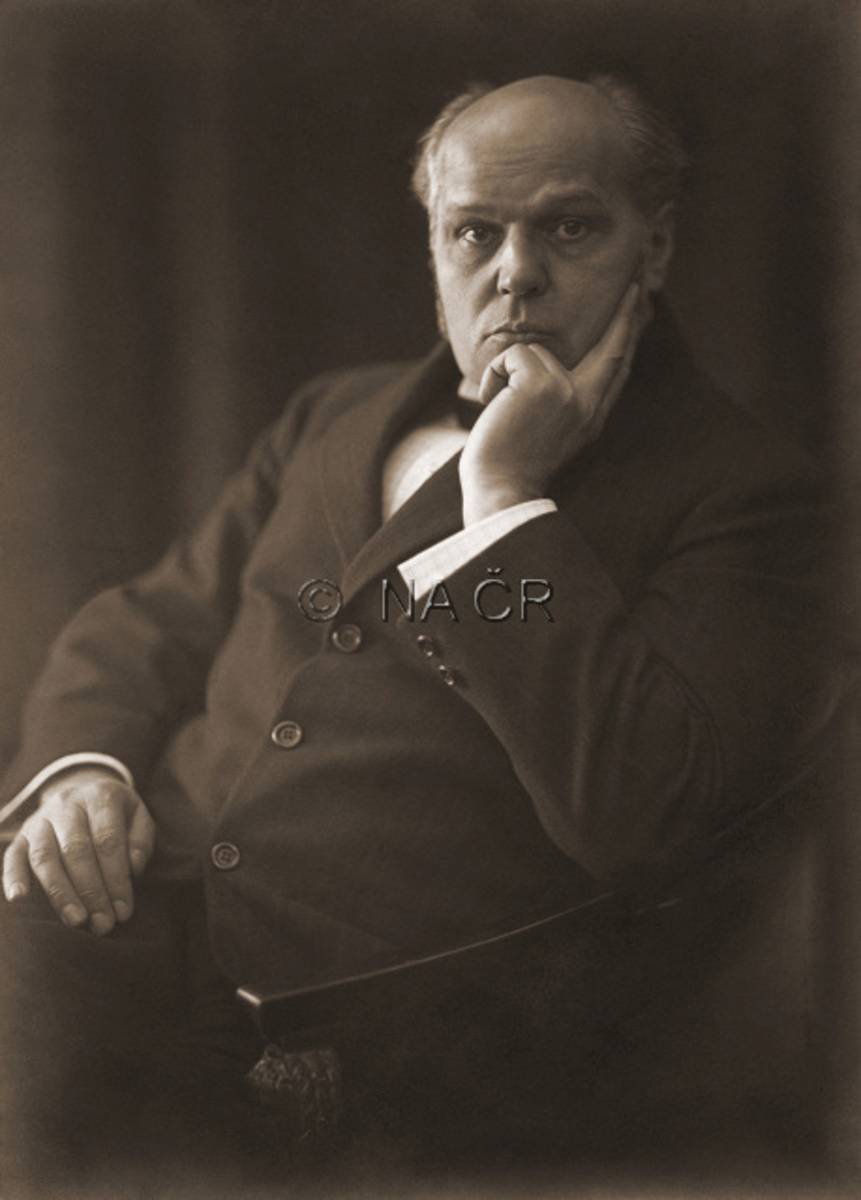
The second parliamentary elections took place throughout the Czechoslovak Republic on 15 November 1925 and the winner was the Republican Party of Farmers and Peasants led by its leader Antonín Švehla. NA ČR Praha
References
Kovtun, J.: Republika v nebezpečném světě. Éra prezidenta Masaryka 1918–1935. Praha 2005;
Friedl J. – Jedličková B. – Škerlová J.: Parlamentní volby 1946 a Československo. Souvislosti, prognózy, fakta, následky. Praha 2017;
Semotanová, E. ‒ Zudová-Lešková, Z. – Močičková, J. – Cajthaml, J. – Seemann, P. – Bláha, J., D. a kol.: Český historický atlas. Kapitoly z dějin 20. století. Praha 2019.
Československá volební statistika. Český statistický úřad, Praha, dostupné z https://www.czso.cz/csu/czso/vysledky-voleb-do-poslanecke-snemovny-v-letech-1920-2006-n-tgdmp17urw [verified 18/02/2020].

This work is licensed under a Creative Commons BY-NC-ND 4.0
Elections in the year 1929
The third (early) elections to the Parliament of the Czechoslovak Republic, which took place on 27 October 1929, were again won by the Republican Party of Farmers and Peasants. The elections were not attended by active members of the army and police force in order to prevent political agitation in the armed forces. The Republican Party defended its primacy and as a contrast, the communists and the People's Party lost their voters. The elections again opened the way to a broad coalition, which also included left-wing non-communist parties.
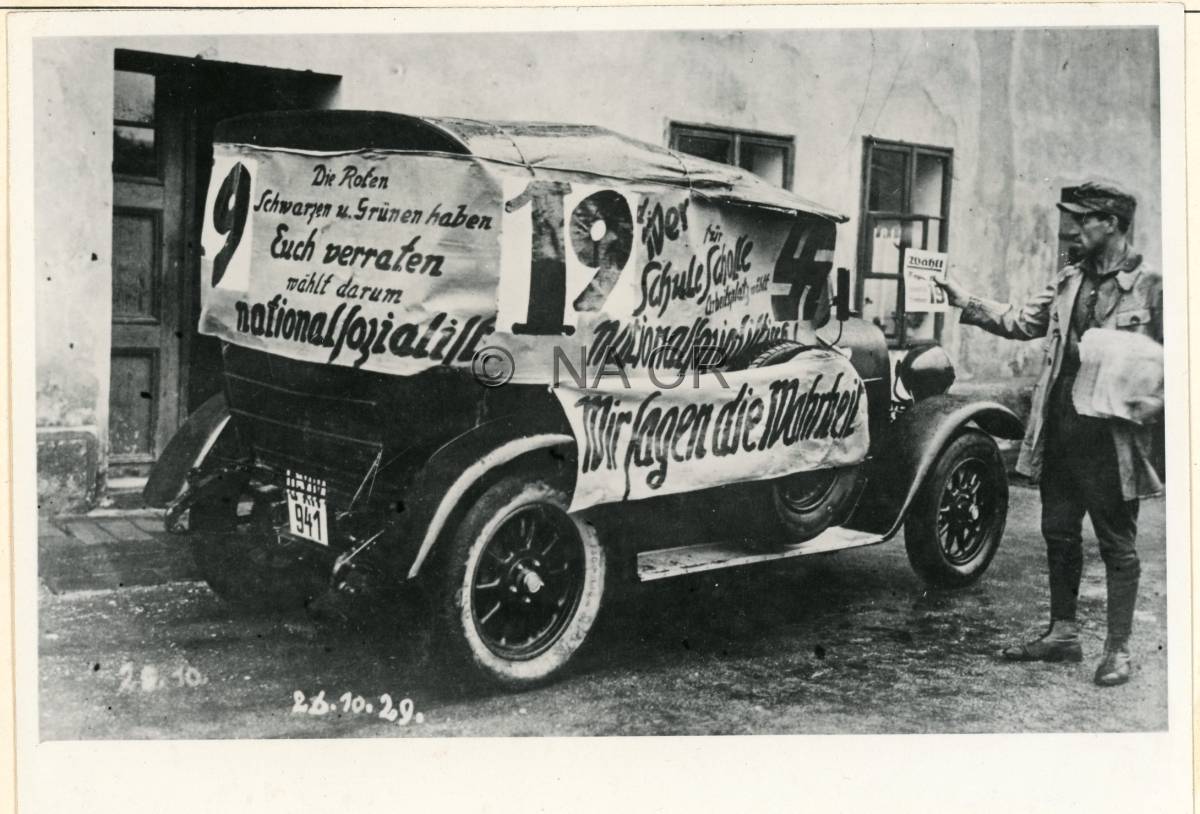
Election agitation of Deutsche nationalsozialistische Arbeiterpartei (German National Socialist Workers' Party) for the parliamentary elections of the Czechoslovak Republic in Liberec in October 1929. NA ČR Praha

Election poster of Czechoslovak Social Democratic Workers' Party making an appeal to the women – mothers. NA ČR Praha
References
Kovtun, J.: Republika v nebezpečném světě. Éra prezidenta Masaryka 1918–1935. Praha 2005;
Friedl J. – Jedličková B. – Škerlová J.: Parlamentní volby 1946 a Československo. Souvislosti, prognózy, fakta, následky. Praha 2017;
Semotanová, E. ‒ Zudová-Lešková, Z. – Močičková, J. – Cajthaml, J. – Seemann, P. – Bláha, J., D. a kol.: Český historický atlas. Kapitoly z dějin 20. století. Praha 2019.
Československá volební statistika. Český statistický úřad, Praha, dostupné z https://www.czso.cz/csu/czso/vysledky-voleb-do-poslanecke-snemovny-v-letech-1920-2006-n-tgdmp17urw [verified 18/02/2020].

This work is licensed under a Creative Commons BY-NC-ND 4.0
Elections in the year 1935
The results of elections held on 19 May 1935 signalled a new period in the development of Czechoslovak parliamentarianism. Sixteen parties and coalitions tried to win the voters' favour. The greatest result was achieved by a coalition of the Sudeten German Party and Carpathian German Party led by Konrad Henlein. Except for the Agrarian Party, the Czechoslovak parties failed to gain significant electoral support. However, contrary to the practice, President Tomáš Garrigue Masaryk did not entrust the leader of the victorious German coalition, K. Henlein, with the formation of a new government. Instead, he appointed the third government of Jan Malypetr.

Agitation of Czechoslovak People's Party for the parliamentary elections that took place on 19 May 1935. Since 1925, the party was also active in Slovakia under the name of Československá strana ľudová, but won only 7.5 % of the votes. NA ČR Praha
References
Kovtun, J.: Republika v nebezpečném světě. Éra prezidenta Masaryka 1918–1935. Praha 2005;
Friedl J. – Jedličková B. – Škerlová J.: Parlamentní volby 1946 a Československo. Souvislosti, prognózy, fakta, následky. Praha 2017;
Semotanová, E. ‒ Zudová-Lešková, Z. – Močičková, J. – Cajthaml, J. – Seemann, P. – Bláha, J., D. a kol.: Český historický atlas. Kapitoly z dějin 20. století. Praha 2019.
Československá volební statistika. Český statistický úřad, Praha, dostupné z https://www.czso.cz/csu/czso/vysledky-voleb-do-poslanecke-snemovny-v-letech-1920-2006-n-tgdmp17urw [verified 18/02/2020].

This work is licensed under a Creative Commons BY-NC-ND 4.0
Elections in the year 1946
The first post-war nationwide elections to the Constituent National Assembly of the re-established Czechoslovak Republic (already without Subcarpathian Ruthenia) took place on 26 May 1946. They fully adopted the Programme of the new Czechoslovak Government of National Front of Czechs and Slovaks (the Košice Government Programme) declared on 5 April 1945. This gave rise to controlled democracy, or the so-called people's democracy. In the last democratic elections, only four political parties of the National Front of Czechs and Slovaks were allowed to stand as candidates in the Czech lands and four in Slovakia. The new government was formed by communist Klement Gottwald under whose leadership the Communist Party of Czechoslovakia gradually gained power so that on 25 February 1948, it achieved a one-party system for the long forty-one years.

Elections to the Constituent National Assembly that took place on 26 May 1946 were the first nation-wide elections in the Czechoslovak Republic after its restoration. There was much interest in the election, which can be demonstrated by almost 94% vote turnout. NA ČR Praha
References
Kovtun, J.: Republika v nebezpečném světě. Éra prezidenta Masaryka 1918–1935. Praha 2005;
Friedl J. – Jedličková B. – Škerlová J.: Parlamentní volby 1946 a Československo. Souvislosti, prognózy, fakta, následky. Praha 2017;
Semotanová, E. ‒ Zudová-Lešková, Z. – Močičková, J. – Cajthaml, J. – Seemann, P. – Bláha, J., D. a kol.: Český historický atlas. Kapitoly z dějin 20. století. Praha 2019.
Československá volební statistika. Český statistický úřad, Praha, dostupné z https://www.czso.cz/csu/czso/vysledky-voleb-do-poslanecke-snemovny-v-letech-1920-2006-n-tgdmp17urw [verified 18/02/2020].

This work is licensed under a Creative Commons BY-NC-ND 4.0
Elections in the year 1992
The 1946 democratic elections with multiple political parties were followed by the 1948 elections in an entirely different manner and the Parliament was thus dominated by the Communist Party of Czechoslovakia. In the following years up to 1989, the elections served as a formal act to express agreement with the policy of the ruling Communist Party. The post-1989 election results reflect the refining and ripening of the voters' political views, diversity of ideas that they had been unable to profess openly in the past decades and gradual stabilisation of traditional political parties and profiling of new parties. Large, detailed overviews of the elections in Czechoslovakia and the Czech Republic as well as historical probes are managed and publicized by the Czech Statistical Office.
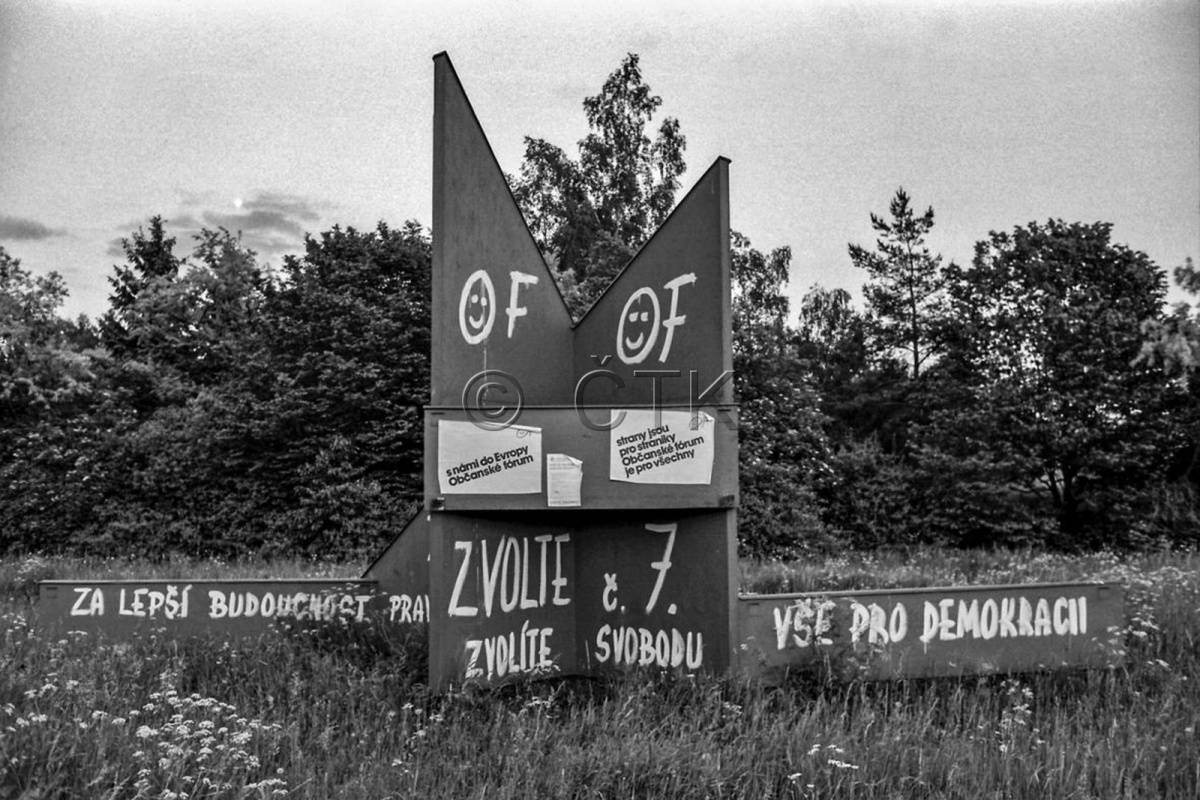
Example of an election campaign in 1990. ČTK / Čejka Jaromír.
References
Kovtun, J.: Republika v nebezpečném světě. Éra prezidenta Masaryka 1918–1935. Praha 2005;
Friedl J. – Jedličková B. – Škerlová J.: Parlamentní volby 1946 a Československo. Souvislosti, prognózy, fakta, následky. Praha 2017;
Semotanová, E. ‒ Zudová-Lešková, Z. – Močičková, J. – Cajthaml, J. – Seemann, P. – Bláha, J., D. a kol.: Český historický atlas. Kapitoly z dějin 20. století. Praha 2019.
Československá volební statistika. Český statistický úřad, Praha, dostupné z https://www.czso.cz/csu/czso/vysledky-voleb-do-poslanecke-snemovny-v-letech-1920-2006-n-tgdmp17urw [verified 18/02/2020].

This work is licensed under a Creative Commons BY-NC-ND 4.0
Elections in the year 1996
The 1946 democratic elections with multiple political parties were followed by the 1948 elections in an entirely different manner and the Parliament was thus dominated by the Communist Party of Czechoslovakia. In the following years up to 1989, the elections served as a formal act to express agreement with the policy of the ruling Communist Party. The post-1989 election results reflect the refining and ripening of the voters' political views, diversity of ideas that they had been unable to profess openly in the past decades and gradual stabilisation of traditional political parties and profiling of new parties. Large, detailed overviews of the elections in Czechoslovakia and the Czech Republic as well as historical probes are managed and publicized by the Czech Statistical Office.
References
Kovtun, J.: Republika v nebezpečném světě. Éra prezidenta Masaryka 1918–1935. Praha 2005;
Friedl J. – Jedličková B. – Škerlová J.: Parlamentní volby 1946 a Československo. Souvislosti, prognózy, fakta, následky. Praha 2017;
Semotanová, E. ‒ Zudová-Lešková, Z. – Močičková, J. – Cajthaml, J. – Seemann, P. – Bláha, J., D. a kol.: Český historický atlas. Kapitoly z dějin 20. století. Praha 2019.
Československá volební statistika. Český statistický úřad, Praha, dostupné z https://www.czso.cz/csu/czso/vysledky-voleb-do-poslanecke-snemovny-v-letech-1920-2006-n-tgdmp17urw [verified 18/02/2020].

This work is licensed under a Creative Commons BY-NC-ND 4.0
Elections in the year 1998
The 1946 democratic elections with multiple political parties were followed by the 1948 elections in an entirely different manner and the Parliament was thus dominated by the Communist Party of Czechoslovakia. In the following years up to 1989, the elections served as a formal act to express agreement with the policy of the ruling Communist Party. The post-1989 election results reflect the refining and ripening of the voters' political views, diversity of ideas that they had been unable to profess openly in the past decades and gradual stabilisation of traditional political parties and profiling of new parties. Large, detailed overviews of the elections in Czechoslovakia and the Czech Republic as well as historical probes are managed and publicized by the Czech Statistical Office.
References
Kovtun, J.: Republika v nebezpečném světě. Éra prezidenta Masaryka 1918–1935. Praha 2005;
Friedl J. – Jedličková B. – Škerlová J.: Parlamentní volby 1946 a Československo. Souvislosti, prognózy, fakta, následky. Praha 2017;
Semotanová, E. ‒ Zudová-Lešková, Z. – Močičková, J. – Cajthaml, J. – Seemann, P. – Bláha, J., D. a kol.: Český historický atlas. Kapitoly z dějin 20. století. Praha 2019.
Československá volební statistika. Český statistický úřad, Praha, dostupné z https://www.czso.cz/csu/czso/vysledky-voleb-do-poslanecke-snemovny-v-letech-1920-2006-n-tgdmp17urw [verified 18/02/2020].

This work is licensed under a Creative Commons BY-NC-ND 4.0
